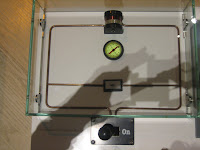Aquí trobareu els llocs més interesants i coneguts
d'Amsterdam respecte a botigues.
El Kalverstraat és un concorregut carrer comercial de Amsterdam,
per no dir el més conegut de tots.
És el carrer comercial més car dels Països Baixos. Aquest comença a la plaça Dam i acaba uns 750
metres de profunditat prop de la Munttoren.
Podem trobar-hi des de botiges com la crocs fins a Macdonalds o la Channel es a dir tot tipus de botigues diferents i per a
tots es publics.
De Bijenkorf és una cadena d'alta gamma de botigues per
departaments al Països Baixos amb el seu botiga insígnia a la
plaça Dam , Amsterdam, on és el seu centre comercial més
important.
Aquest edifici va ser habilitat per monjes catòliques per a cuidar als més
necessitats. Al seu voltant si troben molts dels edificis més antics de la
ciutat.
Flower market, és l'únic
mercat de flors flotant del món, i un dels llocs més fragants d'interès
d'Amsterdam.
Mercat de flors flotant està obert tot l'any per
als vilatans i els visitants poden gaudir d'una àmplia gamma de plantes de
colors sense importar la temporada. Per descomptat, les tulipes holandesos
(en una increïble varietat de colors) ja que són
les flors més famoses d'allà.
Per la zona del Flower Market es troba La Christmas
Palace, que seria una de les botiges més diferents i originals de tot
Amsterdam, ja que venen articles de nadal durant tot l'any.





























